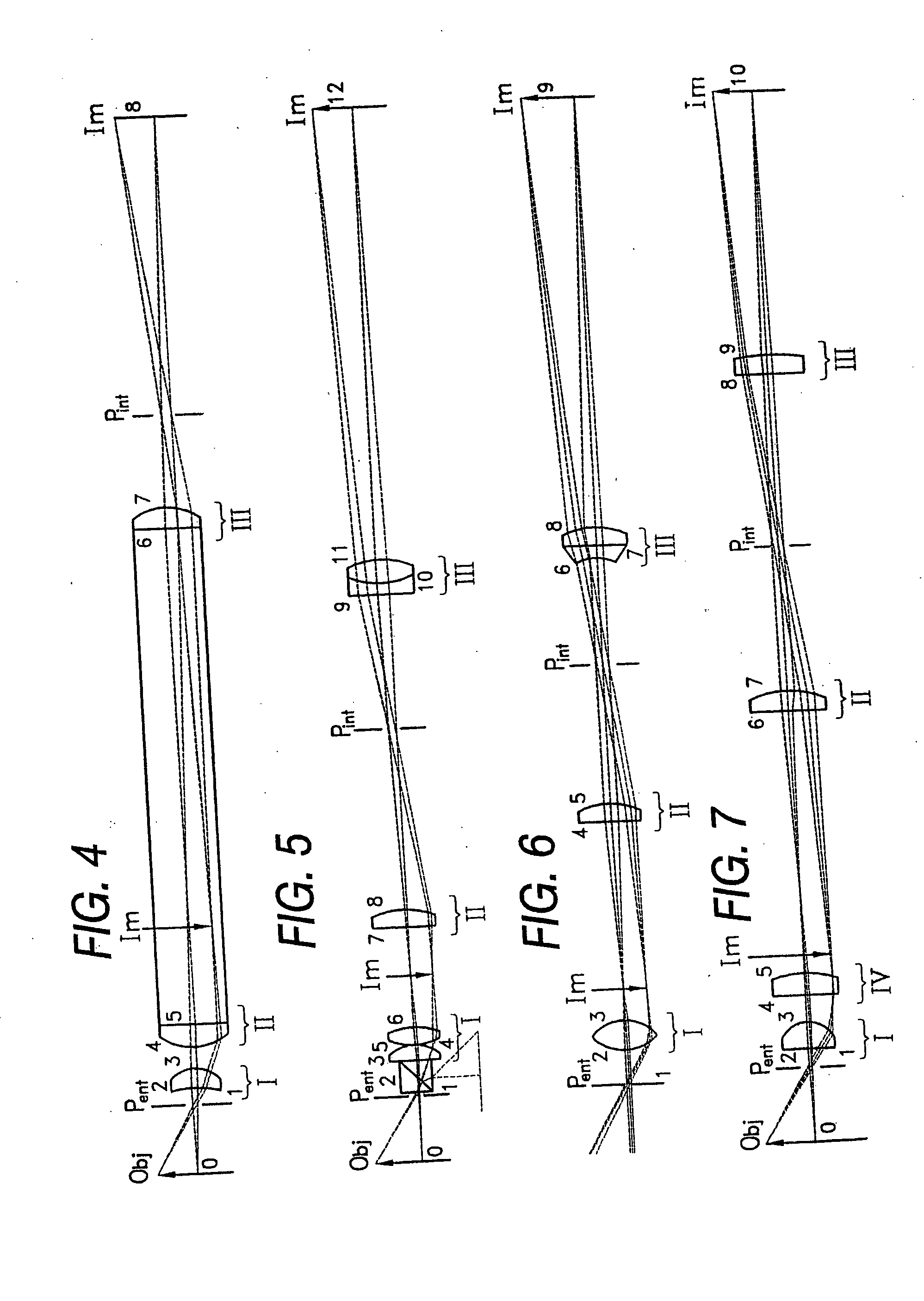Integrated optical system for endoscopes and the like
- Summary
- Abstract
- Description
- Claims
- Application Information
AI Technical Summary
Benefits of technology
Problems solved by technology
Method used
Image
Examples
Embodiment Construction
[0026] The illustrative embodiments to be described below are standardized to a length of about 100 millimeters of the basic optical system and mostly for a nominal magnification of unity. In this way the performance of the various examples can be conveniently compared. Embodiments with other magnifications, field of views, numerical apertures, and with additional relays are presented in order to show that the general concept of the invention is effective over a wide range of applications. The embodiments use conventional, non-GRIN (graded refractive index) lens elements, and thus each lens has a uniform refractive index. In FIGS. 1 through 11 the object and image planes are indicated by an ‘O’ and ‘Im’, respectively and the pupil planes by a ‘P’. The optical system features of object plane, pupil plane, lens surfaces and final image plane are numbered sequentially. Table I through XI present the constructional parameters of the preferred embodiments illustrated in corresponding FIG...
PUM
 Login to View More
Login to View More Abstract
Description
Claims
Application Information
 Login to View More
Login to View More - R&D
- Intellectual Property
- Life Sciences
- Materials
- Tech Scout
- Unparalleled Data Quality
- Higher Quality Content
- 60% Fewer Hallucinations
Browse by: Latest US Patents, China's latest patents, Technical Efficacy Thesaurus, Application Domain, Technology Topic, Popular Technical Reports.
© 2025 PatSnap. All rights reserved.Legal|Privacy policy|Modern Slavery Act Transparency Statement|Sitemap|About US| Contact US: help@patsnap.com



